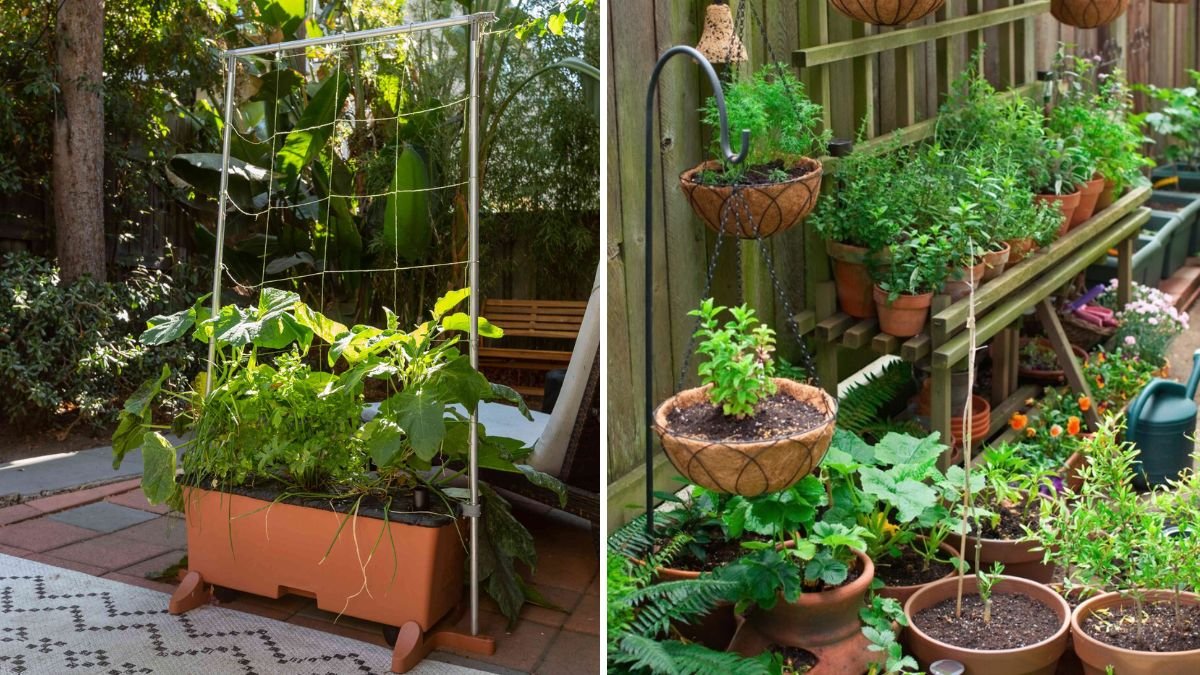Choosing the right container is one of the most critical factors for successful plant growth. Whether you are growing vegetables, flowers, or houseplants, the container you select impacts root development, water retention, aeration, and overall plant health. Experts agree that investing in high-quality, appropriate containers can dramatically improve plant growth and yields.
This guide explores the eight best containers for healthy plant growth, explaining their benefits, limitations, and expert-recommended uses.
1. Terracotta Pots
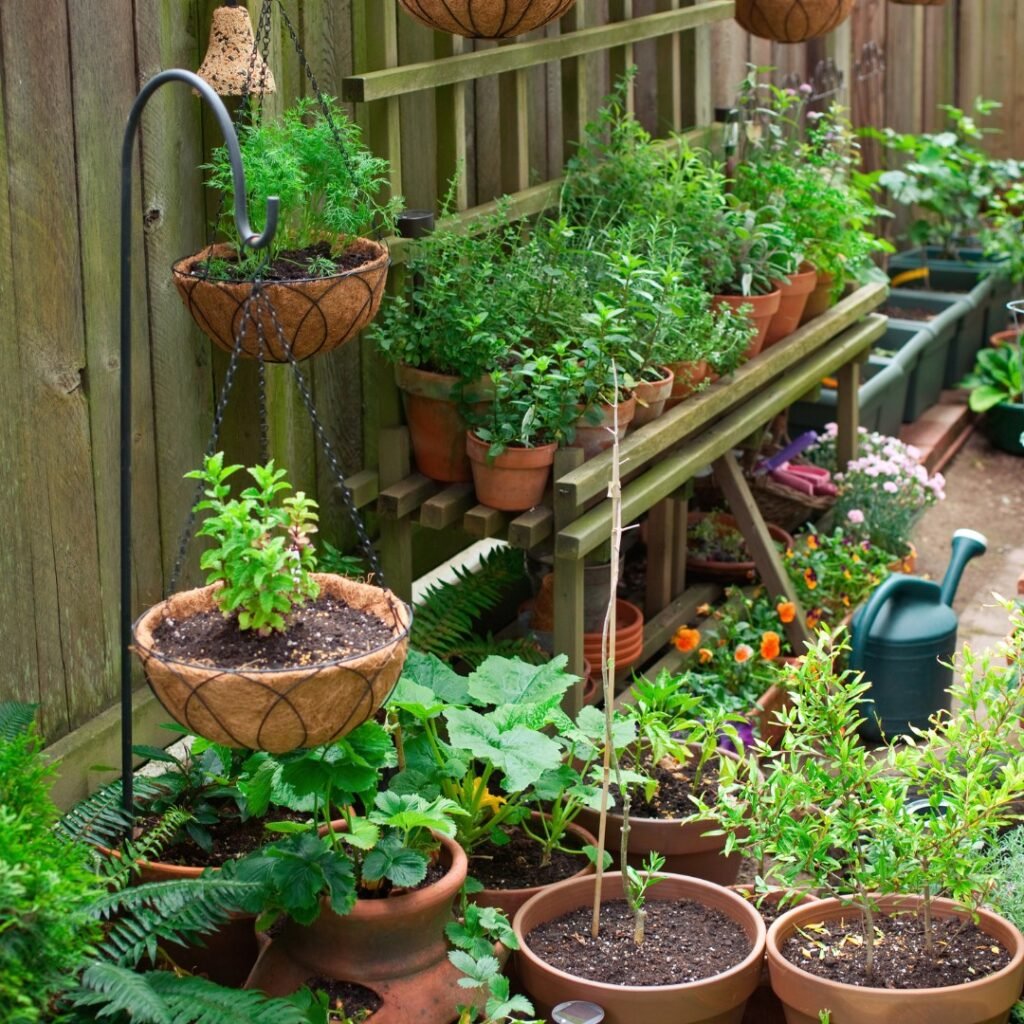
Why Experts Recommend Them
Terracotta pots are porous clay containers that allow air and moisture to move freely through the walls. This improves root aeration and prevents waterlogging, reducing the risk of root rot.
Benefits
- Excellent breathability for roots.
- Naturally regulates soil moisture.
- Classic, aesthetic appeal suitable for indoor and outdoor plants.
Limitations
- Can dry out quickly, requiring more frequent watering.
- Fragile and prone to cracking in freezing temperatures.
Best Uses
- Ideal for Mediterranean herbs, succulents, and cacti.
- Suitable for indoor decorative plants and patios.
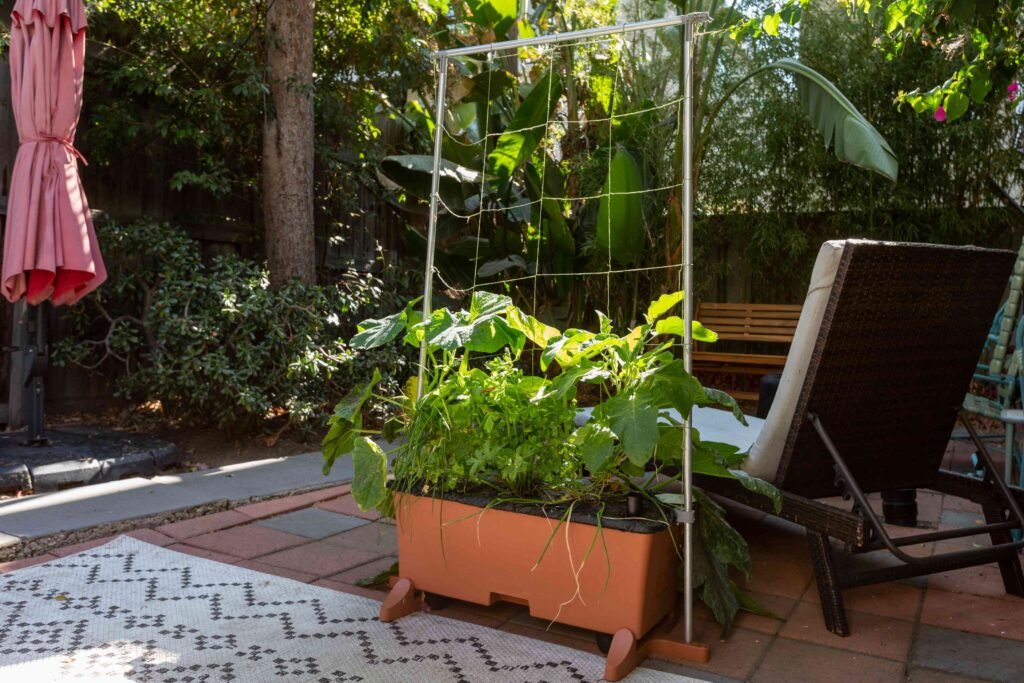
2. Plastic Pots
Why Experts Recommend Them
Plastic pots are lightweight, durable, and versatile. They retain moisture longer than terracotta, making them excellent for plants that require consistent watering.
Benefits
- Affordable and widely available.
- Lightweight and easy to move.
- Retains moisture, reducing watering frequency.
Limitations
- Less breathable, which can lead to root suffocation if overwatered.
- Can fade or crack under prolonged sun exposure.
Best Uses
- Ideal for moisture-loving plants like ferns and tropical houseplants.
- Great for balconies, patios, and indoor spaces where pots may need frequent relocation.
3. Ceramic Glazed Pots
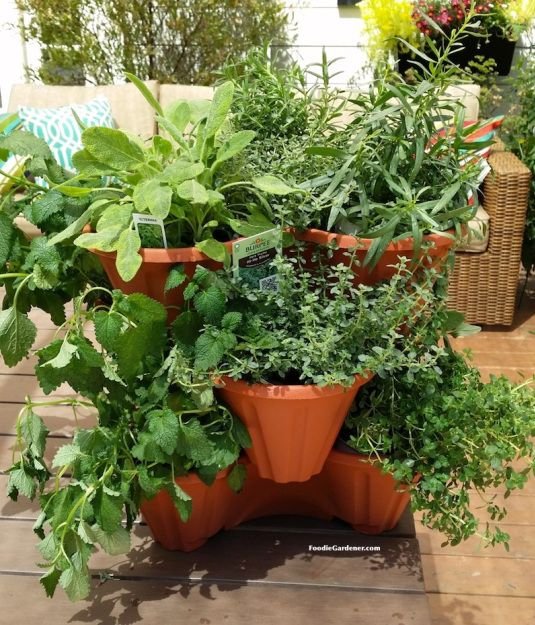
Why Experts Recommend Them
Glazed ceramic pots combine aesthetic appeal with durability. The glaze reduces porosity, which helps retain moisture, while thick walls insulate roots from temperature extremes.
Benefits
- Attractive and available in many colors and designs.
- Retains moisture longer than terracotta.
- Durable for long-term use.
Limitations
- Heavy, especially when filled with soil.
- Can be expensive.
Best Uses
- Ideal for ornamental plants, orchids, and indoor decorative setups.
- Suitable for patios and living spaces where appearance is important.
4. Fabric Grow Bags
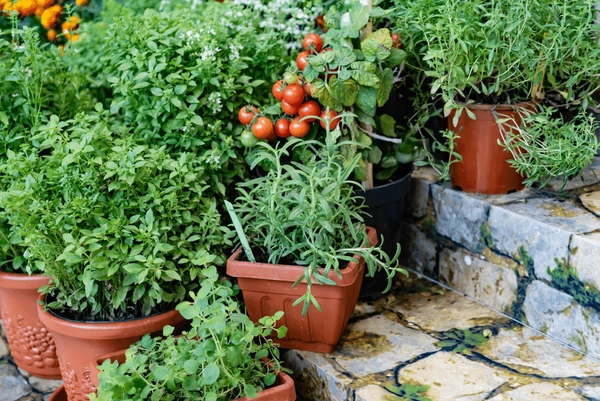
Why Experts Recommend Them
Fabric grow bags, made from breathable felt-like materials, promote healthy root growth through air pruning. Air pruning prevents roots from circling and encourages a denser, more fibrous root system.
Benefits
- Lightweight and portable.
- Improves drainage and aeration.
- Prevents root circling and promotes healthier plants.
Limitations
- Dries out faster than solid containers, requiring more frequent watering.
- Not as visually appealing as ceramic or terracotta.
Best Uses
- Perfect for vegetables like tomatoes, peppers, and carrots.
- Ideal for urban gardeners with limited space.
5. Wooden Planters
Why Experts Recommend Them
Wooden planters offer natural insulation, protecting roots from temperature fluctuations. They are sturdy and can be custom-built to fit patios, decks, or garden corners.
Benefits
- Provides excellent insulation for plant roots.
- Customizable sizes and shapes.
- Adds rustic charm to gardens and porches.
Limitations
- May rot over time if untreated.
- Heavier than plastic or fabric containers.
Best Uses
- Suitable for flowers, shrubs, and small vegetables.
- Great for raised garden beds and balcony gardens.
6. Metal Containers
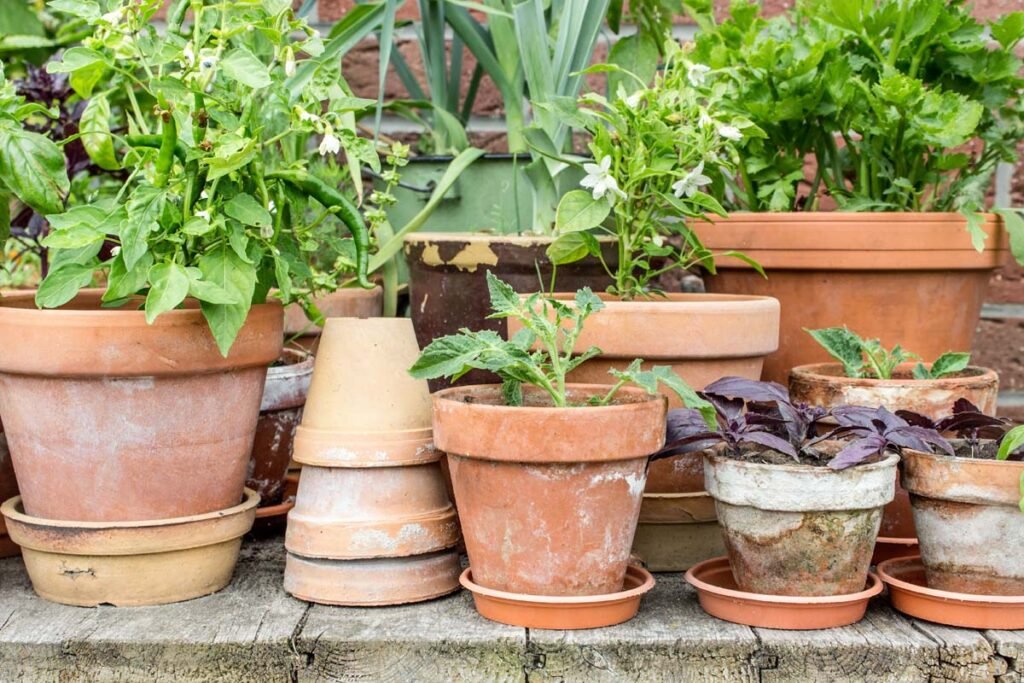
Why Experts Recommend Them
Metal containers, such as galvanized steel or aluminum, are durable and modern. They are often used for vertical gardening and decorative plant displays.
Benefits
- Long-lasting and resistant to breakage.
- Sleek, modern appearance.
- Can be painted or customized.
Limitations
- Can heat up quickly in direct sun, damaging roots.
- Poor drainage if not modified.
Best Uses
- Ideal for indoor plants, succulents, or shaded patio setups.
- Suitable for vertical garden arrangements.
7. Hanging Baskets
Why Experts Recommend Them
Hanging baskets optimize vertical space and add aesthetic appeal. They are perfect for trailing plants and flowers, providing excellent air circulation for roots.
Benefits
- Maximizes limited space, especially in balconies and small porches.
- Good drainage and airflow for healthy root systems.
- Adds visual interest with cascading foliage or flowers.
Limitations
- Requires sturdy hooks or supports.
- Frequent watering may be needed due to faster drying.
Best Uses
- Ideal for petunias, ivy, ferns, and cherry tomatoes.
- Perfect for apartment balconies and small outdoor spaces.
8. Raised Garden Beds
Why Experts Recommend Them
Raised beds are essentially large containers that allow deep soil volume and improved drainage. They provide more control over soil quality, moisture, and fertility than in-ground planting.
Benefits
- Reduces soil compaction and improves root growth.
- Easier maintenance and weeding.
- Can be customized in size, depth, and height.
Limitations
- Requires more initial setup and space.
- Can be heavy and difficult to move once filled with soil.
Best Uses
- Excellent for vegetables, herbs, and shrubs.
- Perfect for patios, decks, and small garden plots.
Expert Tips for Choosing the Right Container
- Match Container to Plant Needs: Deep-rooted vegetables require deeper pots, while shallow-rooted herbs thrive in smaller containers.
- Prioritize Drainage: All containers should have proper drainage to prevent root rot.
- Consider Material Properties: Porous containers like terracotta allow better aeration, while non-porous materials retain moisture longer.
- Weight and Mobility: For balconies or patios, consider the weight of filled containers. Fabric pots and plastic are lightweight, while ceramic and wood may be heavy.
- Temperature Control: Containers can heat or cool rapidly. Insulated materials like wood or thick ceramics protect roots from extremes.
- Aesthetic Considerations: Choose containers that complement your space, especially for indoor or visible outdoor areas.
Conclusion
Choosing the right container is essential for healthy plant growth, affecting root development, water retention, and overall plant health. According to experts, the eight best containers are:
- Terracotta Pots – breathable and classic.
- Plastic Pots – lightweight and moisture-retentive.
- Ceramic Glazed Pots – durable, decorative, and moisture-retentive.
- Fabric Grow Bags – promote air pruning and healthy roots.
- Wooden Planters – natural insulation and customizable.
- Metal Containers – modern and durable with customization potential.
- Hanging Baskets – maximize vertical space and airflow.
- Raised Garden Beds – deep soil, excellent for vegetables and herbs.
By selecting the appropriate container for each plant type, gardeners can maximize growth, yields, and overall plant health. Combining proper container choice with quality soil, sufficient light, and consistent care ensures that your garden thrives, whether indoors, on a balcony, or in a backyard.
